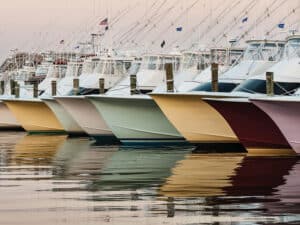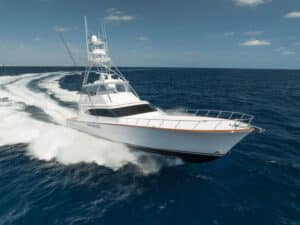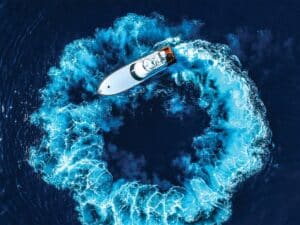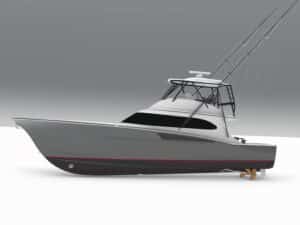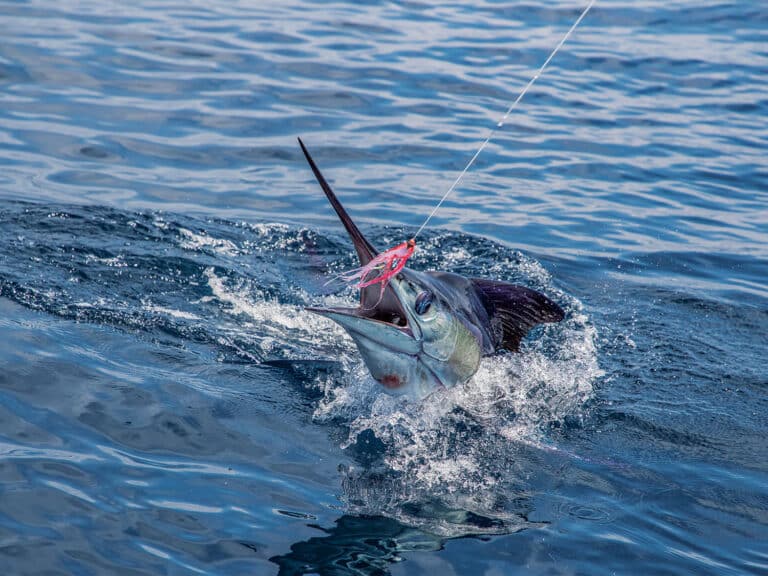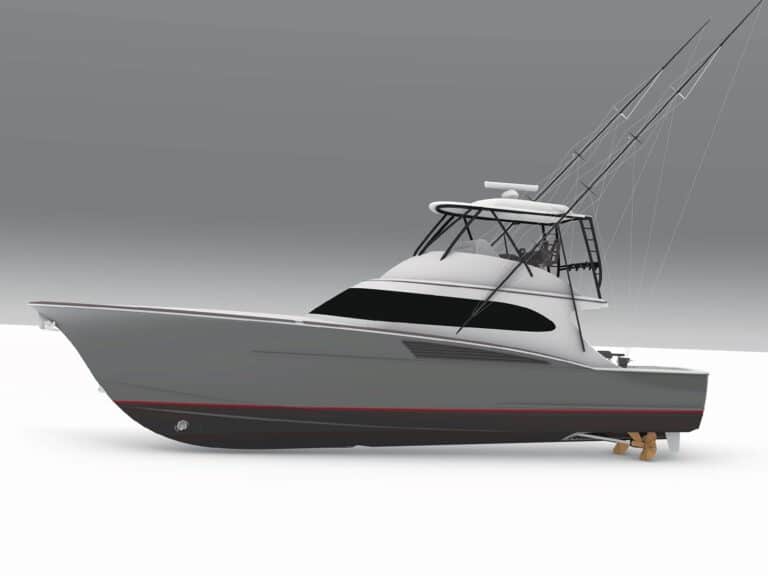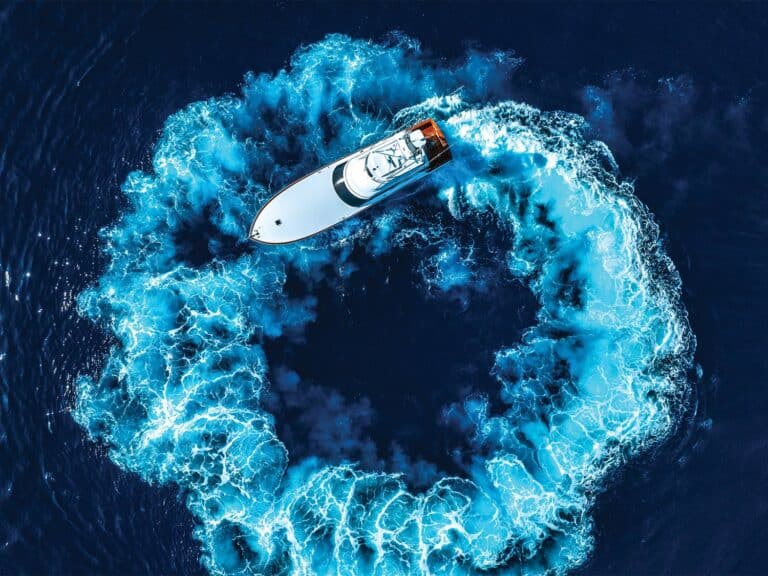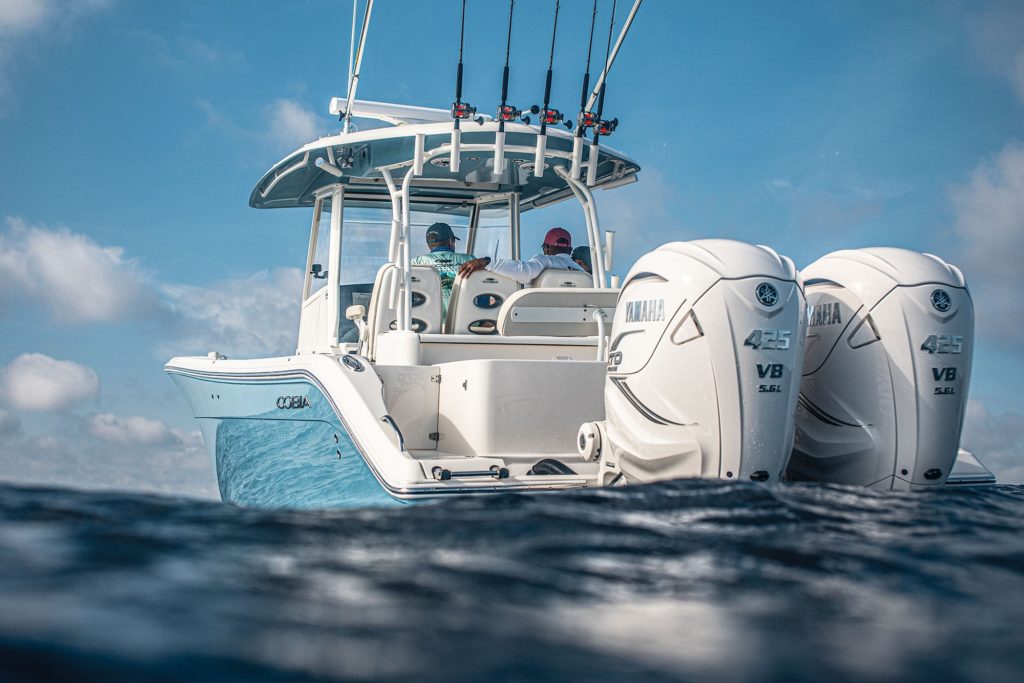
A good bit of brand value comes from the public’s perception of the boat’s quality in construction, but if a solidly built boat lacks the design attributes valued by anglers, they will seek another boat brand—and resale price will be low.
The best boatbuilders take their boats and visualize how they should look. They then visualize how the angler will sit in a seat, step past the helm, hold the wheel and throttle, move about to fight a fish, and use virtually every other feature on it. They look at what causes water to come aboard and how best to move it outboard. They consider how tackle can be stored, ready for action but secure for rough water.
When you buy a boat, you need to think like a boatbuilder who fishes—hard.
What did you dislike about your previous boat? Make sure you have a full inventory of its low points. Did water stand in the corner because the drain was in the wrong place? Was it too hard to reach the rods in the T-top? Were the rod lockers long enough for a 9-foot fly rod? What will keep the rods from dashing themselves to pieces in rough water?
Avoid a center-console boat that has a midship step near the helm; virtually all of your guests will trip on it. A level deck in a center-console has become a safety item, and most builders have removed the midship step. One who has not is behind the times and may use other outdated design features.
I’ve tested few boats that were uncomfortable to drive, but also many that were not as comfortable as they could be. Seat adjustments should be either electric or as easy to grab as a manually adjusted seat on a car. Bucket seats are nice as long as they can be individually adjusted fore and aft without climbing down to look for the adjustment lever.
Livewells should be round or oval. Square livewells will develop stagnant, oxygen-poor corners and trap bait in them. Pressurized livewells have become an important selling point because when the tank is full to the lid, water can’t slosh, jostle or pummel your bait with turbulence. That requires a gasketed lid and a pump system that can push water into the well faster than it can drain out. In fact, a gasketed lid is essential, in my opinion—especially if the livewell is near a seat that will get sloshed on.
Sea chests and fiberglass boxes fitted to the bottom of the hull—rigged with two or more pumps and filled by one or two through-hull fittings—make sure water going to the livewell is not overaerated or foamy. This is especially important on stepped-bottom boats because they are designed to reduce hull drag by introducing air to the bottom of the boat to break surface tension. Unfortunately, a standard water pickup on those boats will pump the froth right into the livewell—or worse, lose prime and pump nothing into the livewell on high-speed runs.
Gunwale rod holders are often fastened from the top with screws or bolts. Better rod holders are fastened from the bottom, either using studs cast into the bottom of the rod-holder flange or, like Gemlux, by large locking collars that screw onto the threaded barrel of the rod holder. For saltwater applications, they should be cast of solid 316 stainless steel. Or they can be fastened from the bottom of the gunwale, giving a cleaner, easier-to-wash deck surface. They’ll also resist rust stains better.
Editor’s Tip: There are no boats of high reputation I’ve tested that didn’t live up to the reps. But some lesser-known brands bring a great deal of value to the owner. When looking at a boat, don’t get overenthused by the gloss; look down the side of the boat to see if the hull shows ripples or fiberglass print-through—a sign of a sloppy build. Even caulk seams, the precise fit of hatches and quality components mean the boat was built with care.
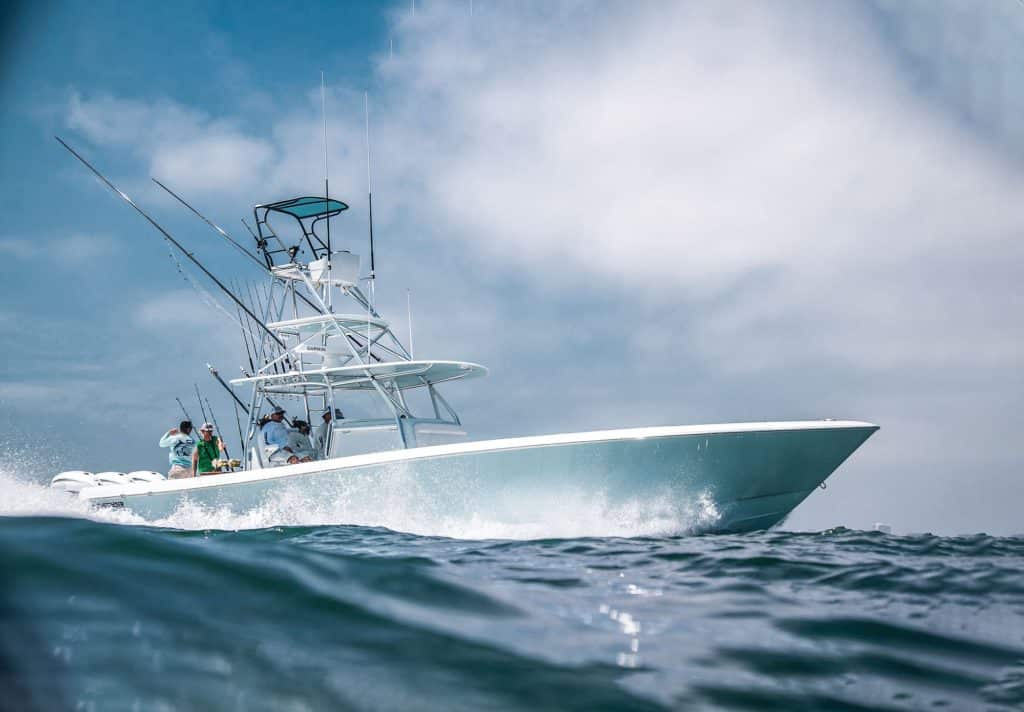
When boat shopping, take friends you fish with. Let everybody move around the boat at once and see how the traffic flows, how the tackle is accessed, and how the essential compartments work in the presence of a working crew.
The most important point to consider in quality is future maintenance. Sooner or later, you’ll have to work on important components of the boat. How are the fuel tanks installed? Can they be removed without having to cut out the deck? The better boats have hatches fastened firmly above the tanks that can be removed and replaced should a tank fail—and after 10 or so years, they do. Same goes for gensets. Believe it or not, some boatbuilders don’t plan for having to remove a genset.
Lastly, a thing about wiring: If that job is done poorly, and wires aren’t labeled at least at both ends, they don’t meet American Boat and Yacht Council requirements. Tinned wire is more corrosion-resistant than bare copper wire, and the best boats use it exclusively. Wire ends are sealed with shrink wrap, and connections are waterproof Deutsch connectors or similar brands.
Just a few years ago, boaters were suspicious of digital wiring harnesses that operate components with a touchscreen switch and digital bus system. You can’t fix them in a pinch with paper clips and gum wrappers. The truth is, though, they don’t break often and are better prepared to deal with salty air. Don’t avoid them. In fact, embrace them. You won’t be sorry.
While brand value is influenced by good marketing—and that’s valuable to the owner at resale—quality construction is the best marketing tool in boating. Word gets around.
Editor’s Tip: The most important quality check will be the test drive. Most dealers won’t give you one until you’ve signed a contract with your right to refuse for any reason. If you can’t get it to rough water, run circles with it and double back over the wakes. Listen for drumming, oil canning and hatch rattles. Nothing should rattle or crack. Run every system on the boat. If work is still needed, schedule another test drive to prove the work.
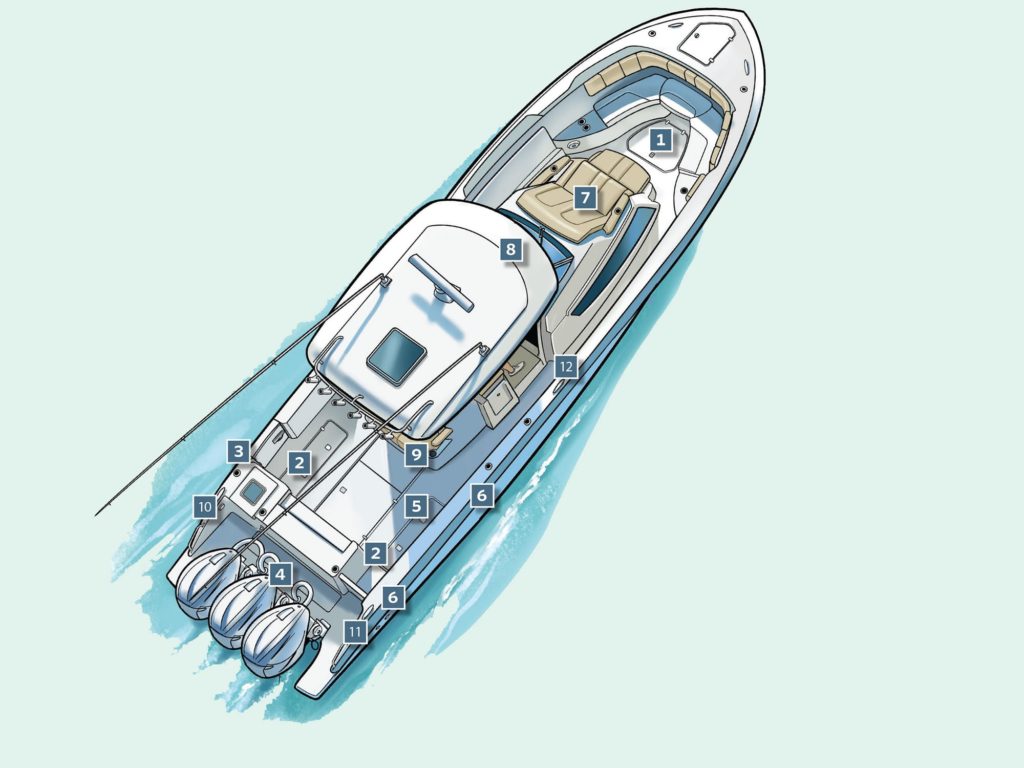
Quality Checkpoints
Quality is shown by how well all the small elements work together to make the vessel reliable and fun.
1. All deck hatches should be guttered and drain overboard, not to the bilge.
2. The deck should be crowned slightly to drain to corner drains with strainers.
3. Side boarding doors should open inward, and the boarding ladder should have secure storage.
4. The transom platform should allow optimal passage from port to starboard.
5. If fish boxes require pump-outs, choose reliable gulper pumps over macerators.
6. Belowdecks, rod-holder fasteners with locking rings are preferred instead of bolts in a flange.
7. Multidensity seat-cushion foam should be used to soften the ride and absorb shock without bottoming out.
8. A tempered-glass windshield is more durable and scratch-resistant than plexiglass or acrylic.
9. Mezzanine seats should be slanted forward for a comfortable ride as the bow rises.
10. Rod and cup holders should all drain overboard or to the deck.
11. Deck scuppers and bilge-pump ports should exit the hull above the waterline.
12. Center-console decks should be one level from bow to stern.
